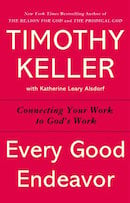When?
Blog / Produced by The High Calling
My soul thirsts for God, for the living God. When can I go and meet with God?
Psalm 41:2
The Ghost Dance, one of the saddest religions of all time, was a frenetic hobgoblin of Christianity, mysticism, Native American ritual, and sheer desperation that swept native life throughout the American West in the final years of the 19th century.
Wovoka, a Piute holy man, saw the original vision, then designed the ritual from his own revelation. Erect a sapling in an open area, a familiar symbol from rituals like the Sun Dance, which was, back then, outlawed by reservation agents. Purge yourselves—enter sweat lodges, prostrate yourself before Wakan Tanka, the Great Mysterious, to witness to your humility. Often warriors would cut out pieces of their own flesh and lay them at the base of that sapling to bear witness to their selflessness.
Then dance—women and men together—dance around that sapling, dance and dance and dance and don’t stop until you fall from physical exhaustion and spiritual plenitude. Dance until the mind numbs and the spirit emerges. Dance into frenzy. Dance into religious ecstasy.
If they would dance, Wovoka claimed Christ would return because he’d heard their prayers and felt their suffering. When he came, He’d bring the old ones with Him, hence “the Ghost Dance.” The buffalo would return, and the people could again take up their beloved way of life. If they would dance, the dust from the new heaven and the new earth would swallow the wasicu, the white people. If they would dance, their hunger would be satiated, their thirst assuaged, their sadness comforted.
“The great underlying principle of the Ghost Dance doctrine,” says James Mooney, “is that the whole Indian race, living and dead, will be reunited upon a regenerated earth, to live a life of aboriginal happiness, forever free from death, disease, and misery.” It was that simple and that compelling a vision.
As a white Christian, I am ashamed to admit that in the summer of 1890, the desperation of native people, fueled by poverty, malnutrition, and the near death of a culture, created a religion that played a disturbing role in the massacre at Wounded Knee.
It’s easy for many of us to read the opening two verses of Psalm 42 if we’ve never felt the thirst David is talking about. But it’s helpful for me, a white Christian, to know the story of the Ghost Dance, to understand how thirsty Native American people looked to a God who had seemingly left them behind. They were dying, spiritually and physically.
That’s why the thirsty four-leggeds here would make sense to Native American people—why, back then, they would have understood the opening bars of David’s song: “As the deer panteth for the water.”
What’s at the bottom of this lament is nothing less than God’s apparent absence.
When contemporary Christianity turns excessively therapeutic and promises something Disney-like, something smilingly insipid, lines like these can become nothing more than words. But humankind has all too abundant a history.
I’m not at all thankful for the story of the Ghost Dance, or even of David’s own desperation recorded here in this memorable psalm. But I am comforted in the knowledge that when my bootless cries seem to disappear into the wide-open spaces of the plains where I live, I know I’m not the first to feel abandoned.
The gift of grace in the near despair of the opening lines of Psalm 42, or so it seems to me, is that neither you nor I is ever really alone.





